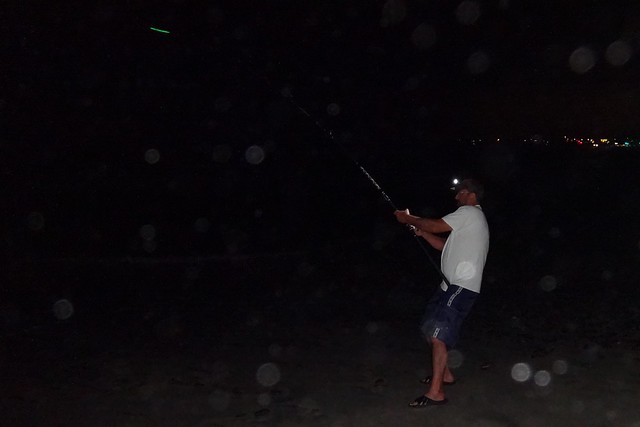
Tom had the first fish on, and it was something big and strong. It wore him down pretty well, and I'm going to spill one of his secrets here (sorry Tom!). When his arms got tired, Tom would point the rod tip straight towards the fish and walk slowly backwards up the beach. Once he had walked 20 or 30 feet, he would put the rod tip back up in the air and reel in the line as he walked towards the water. By this point it was pretty clear that he was fighting a big ray, and his technique was useful in getting the fish off the bottom and let him put some line back on the reel.
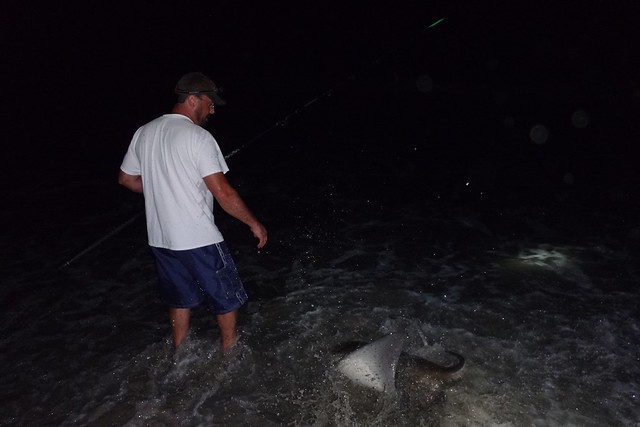
Tom landed the fish with several bystanders cheering him on, including two police officers. The bright light in the photo below is from one of the officer's flashlights.
Bat Ray (Myliobatis californica)
Meanwhile, Steve had been getting bites closer to the reef. Apparently he caught and released a small leopard shark while Tom was fighting the bat ray, but neither of us saw it. We'll have to take his word on it. Next, he hooked up with the biggest kelp bass I've ever seen. This is the most you'll see Steve smile.
Kelp Bass (Paralabrax clathratus)
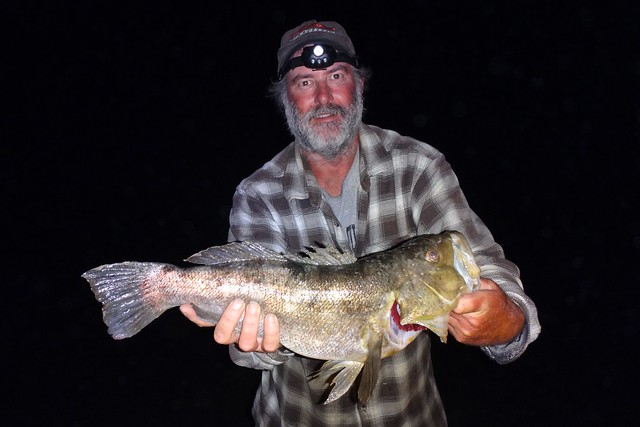

Tom landed the fish with several bystanders cheering him on, including two police officers. The bright light in the photo below is from one of the officer's flashlights.
Bat Ray (Myliobatis californica)

Meanwhile, Steve had been getting bites closer to the reef. Apparently he caught and released a small leopard shark while Tom was fighting the bat ray, but neither of us saw it. We'll have to take his word on it. Next, he hooked up with the biggest kelp bass I've ever seen. This is the most you'll see Steve smile.
Kelp Bass (Paralabrax clathratus)

Steve's third species of the night was a moray, which is one I would love to catch. However, they are without a doubt the least desired catch when you're fishing for sharks. They're very talented at trashing nice homemade shark rigs.
California moray (Gymnothorax mordax)

California moray (Gymnothorax mordax)

The night was getting late, and Steve had one more bite. He was hoping it would be a decent shark. You can see the determined look on his face as he prepares to set the hook.
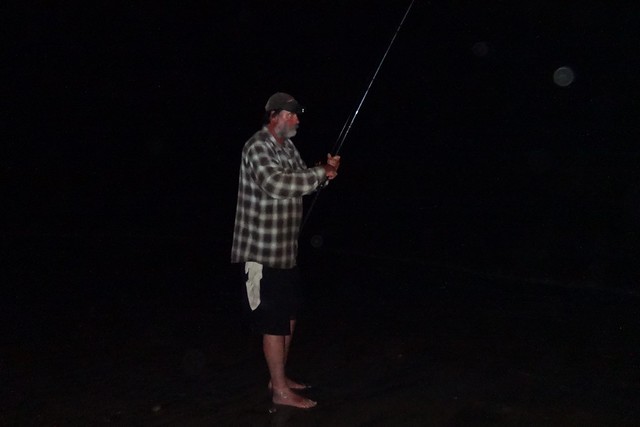

It did turn out to be a shark, but it was not one that you would brag to your friends about. It was a smoothhound, one of the smallest shark species on the Pacific coast. Look at the size of the mackerel head Steve was using as bait compared to the size of the smoothhound.
Gray Smoothhound (Mustelus californicus)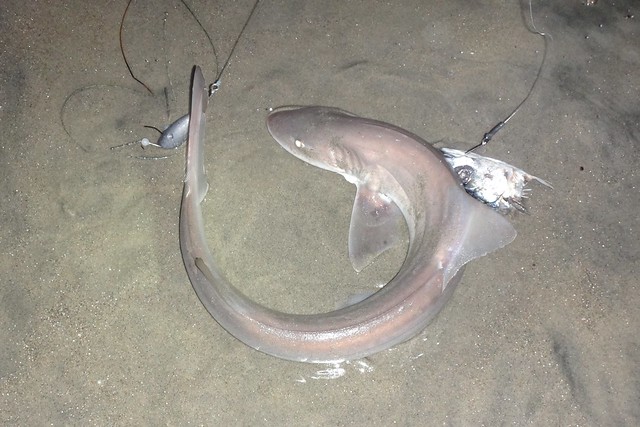
I have to admit, I did get a little distracted as the evening progressed. There are some pretty neat tidepools at Cardiff that become exposed at low tide, and I wanted to see if any fish hung out in them. The tidepools are teeming with life, as you can see in this photo from one of the shallow depressions in the rock.
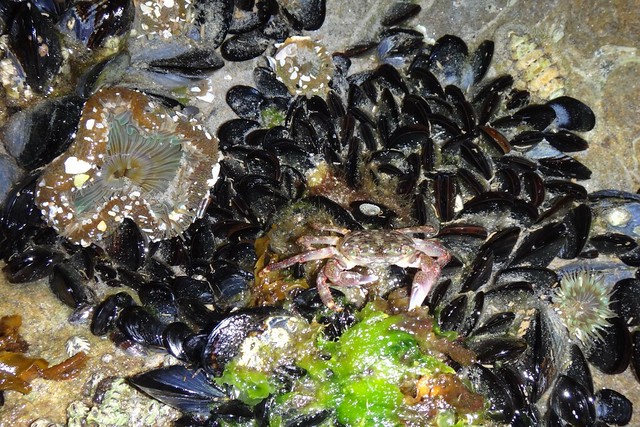
Gray Smoothhound (Mustelus californicus)

I have to admit, I did get a little distracted as the evening progressed. There are some pretty neat tidepools at Cardiff that become exposed at low tide, and I wanted to see if any fish hung out in them. The tidepools are teeming with life, as you can see in this photo from one of the shallow depressions in the rock.

The deeper pools did indeed have fish, and I was able to get a few good photos. The fish were swimming around in the open until my light caused them to hide under a rock ledge. I was able to count four different species: zebra chub, opaleye, a true sculpin, and a blenny.
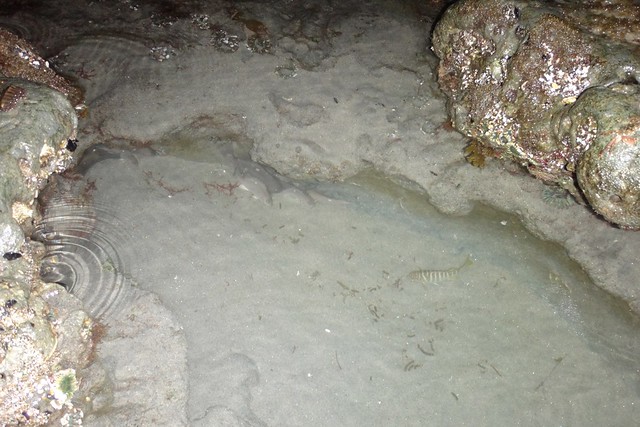
Zebra Chub (Hermosilla azurea)
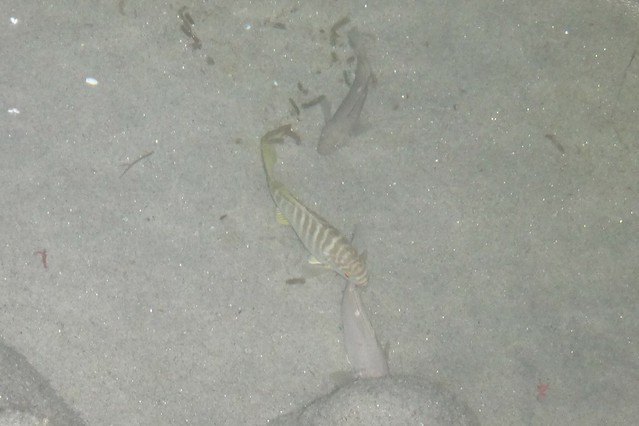
Opaleye (Girella nigricans)
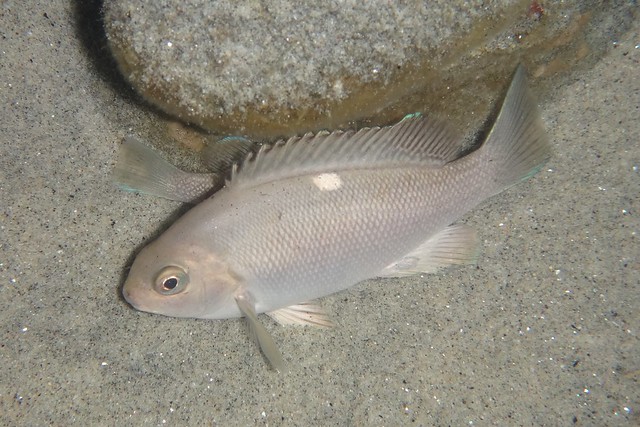
Sculpin species - camouflaged behind the opaleye
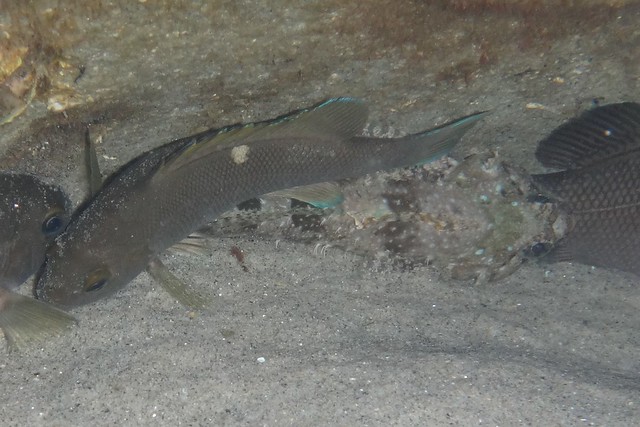
Blenny species - small and highly mobile
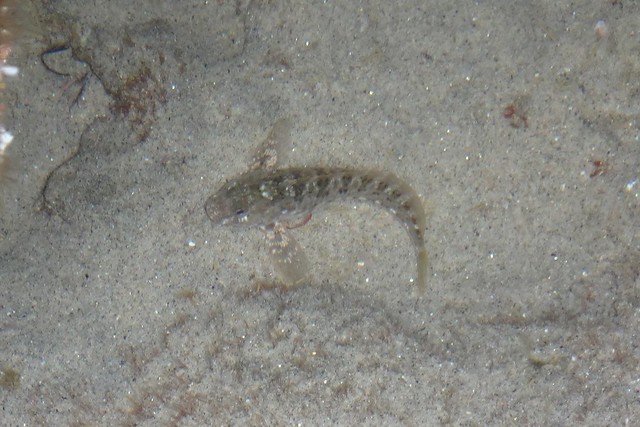

Zebra Chub (Hermosilla azurea)

Opaleye (Girella nigricans)

Sculpin species - camouflaged behind the opaleye

Blenny species - small and highly mobile

Thanks to Tom and Steve for inviting me out and showing me the ropes. It was probably an average outing for the two of you, but I learned a lot by watching and talking to you guys. It was pretty exciting to know that this spot can add quite a few species to my lifelist: sevengill shark, soupfin shark, leopard shark, grey smoothhound, California moray, and all of the tidepool critters. I'll be back!
No comments:
Post a Comment
Note: Only a member of this blog may post a comment.